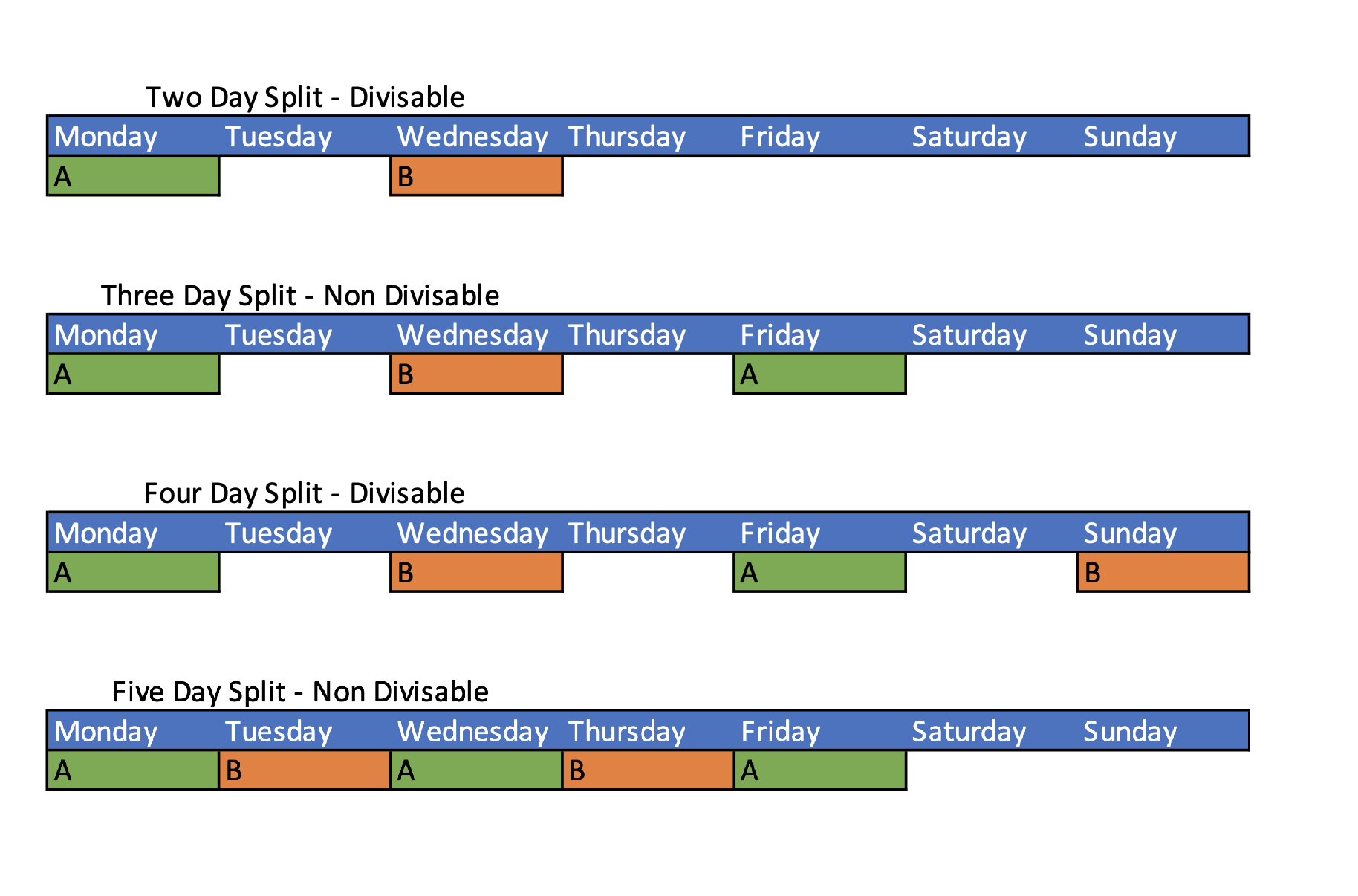Getting Started with Your Program
Your Program
Welcome, we are here to guide you through the anatomy of your strength program. Before we begin, we always recommend that you get cleared by a healthcare professional to assess whether you are fit and able to perform the program. It is also advised that you get a movement specialist to assess your movement capabilities (often in the form of a movement assessment) to determine if any adaptations might need to be added for you to get the most out of the program. If you have any questions, please do not hesitate to reach out to us; we are always happy to answer anything relating to our programs as we strive for them to be user-friendly and enjoyable.
Without further ado, let us begin.
Goals and Intention
It is always good to have an intention behind your training. You have downloaded this program because you have a goal in mind. We could say let's keep it easy and say you want to get stronger, which fits into the name of the program. But strength can mean many different things to different people. Perhaps you play a sport; in that case, strength has been shown to improve some attributes, such as speed, agility, and reactivity, needed to excel in whatever sport you may play. Maybe you want to keep up with your kids or grandkids; strength training can keep your muscles, bones, and tendons healthy, which can translate to the demands and fun times of keeping up with little kids. A goal for most is to stay active and resilient as we age; strength training has been shown to combat some of the natural aging processes that may make us feel slower or hinder some of the activities we hope to participate in. This is a roundabout way to say it is always good to have some form of subjective or objective goal in mind. Subjective can be feeling better and having the perception that you are achieving the physical, or mental, task you are striving to do on a daily basis. Objective could be based on the variables that we change within the program; more on this later. So, take a moment to reflect on what you hope to get out of this program.
Splitting up your Training Days
We first want to address the outline of the program. You might have noticed a large A and B on the first page within the outline. This specifies the specific workout you will be doing for that day. You may be asking yourself, “Does that mean I should only perform this workout twice per week?”. That question is completely dependent on your specific circumstances. Twice a week is a great amount for strength training, especially if you add in a day or two of some kind of aerobic training (such as walking, running, cycling, etc.). In the industry, we call this Concurrent Training, which is a fancy way of saying two training adaptations (strength or cardiovascular) at the same time. Perhaps you want to add in another day of strength training; we love this idea. The only thing you may need to do is account for the fact that the program is no longer divisible, meaning you are going to bias a specific day during one week to the other. This is fine; it might mean you need to look at your training in two-week blocks rather than one.
Non Divisible Week 1 - ABA
Week 2 - BAB
I have outlined some possible week splits below:
Weekly Splits
Program Outline
Alright, let us look at the program itself. We will be looking at the program much like how we read a book, starting from the top and tracing down from left to right, with a page break in the middle.
Warm Up
We have designed the warm-up so that it complements some of the movements being expressed in the programs below. For instance, on the program we have pictured “Hip Hinge + Reach” is a great patterning exercise to get you ready for the Sumo Deadlift on Day A. This is the bit of the program that has some wiggle room in regards to its execution. We all come to the gym with our own idiosyncrasies, in regards to areas of the body that need to be mobilized or activated. Please feel free to add any extra movements that you deem necessary or take any that we outlined you feel does not return on the time invested. Feeling tired or cold? Add more in. Feeling fresh and ready, perhaps take some out. The most important part of this section is clued within the title; you need to feel warm once it is finished.
Sets, Reps, and Rest Period for Strength Session
Now, I know we said this is like a book we read but we are going to have to jump around a bit to make sense of everything. If you look down on Day A, the first exercise is Sumo Deadlift, next to the exercise you will see 4 x 10, 8, 6, 4. The numbers next to the exercises specify the sets and reps performed (always in that order, if someone programs for you the other way around...run).
An easy way to think of it is sets are the way we group repetitions, repetitions are the amount of times we perform the exercise.
So, 4 x 10, 8, 6, 4 would equal 28 repetitions done with rest periods to break up the sets.
Let us unpack this a little. The first set of Sumo Deadlifts will be performed for 10 repetitions (1 x 10), the next set will be performed for 8 repetitions (1 x 8), and we follow that for the descending rep scheme. At the end, we should have performed the Sumo Deadlift four times with varying repetitions.
Let's look at another example on Day B to solidify this idea. The first exercise on Day B is Tempo Bench Press for 3 x 6-8. We have added a new variable in this set and rep scheme; the dash signifies that I can perform either 6 to 8 repetitions, this is generally dictated by the load I put on the bar or what specific adaptation I hope to achieve from the exercise. More on this topic in another blog.
Let's keep it simple; say we perform 3 x 6, that is 3 sets of 6 straight repetitions, so by the end of the exercise I would have performed 18 repetitions interspersed with rest periods.
Now onto rest periods, above the days you will see “Rest period for strength session: 45-60 secs” this specifies the specific rest period between the sets. Let us go back to the bench press with 3 x 6. I perform 6 repetitions then rest for 45-60s depending on how I am feeling, after the rest is done I perform another 6 repetitions and rest again.
Rest is another variable we can modify to achieve specific adaptations within our session. This will be addressed in another blog post.
One more note on rest, you might notice towards the bottom of the program it says “superset”. This means that these exercises will give you superpowers...not really, well they will super strength but no flying...yet. What is a superset? This signifies that the two exercises below will be done in succession, meaning one after the other. On Day A we have “Standing S.A. Landmine Press and Hamstring March”; this is labeled as a superset so once we perform 1 set of 10 repetitions of the press we instantly move onto the first 1 set of 10 repetitions of marches. Once these are done, feel free to rest for 30-60 seconds.
Team Session
At the bottom of the program, you may have noticed “Team Session” and thought, "I want fun, laughter, and what the coach says in my life." Unfortunately, this is the one area of the program that we cannot supply to you. Because it is super secret...no, not really, it is just up to our coaches and community to bring the fun, laughter, and group session. Please take this time to add a cardio finisher, some arms, extra legs, or cooldown. We encourage laughter, so try and make it fun. This will lead onto another post about the benefits of training with a coach and other people.
Closing Thoughts
So there you have it, strength session complete, you have learned the ins and outs of what our flagship program is all about. The following pages within your program give you a detail of the specific exercises performed with relevant cues. Once again, we consider it a benefit to get someone to watch you perform the exercises. A friend, family, coach, pet dog, as it is hard to get objective feedback of how you are performing the exercise from feeling alone. Check out this post about the benefits of having a coach (insert link).
Thing We Did Not Cover Here
Here is a list of things we did not cover here but will tough on in further blogs
Ideal training frequency
How changing training variables changes the outcome (adaptation)
Mental benefits of exercise
Exercise technique
Nutrition to maximise results and recover
Recovery modalities
Once again, feel free to reach out if you have any questions.



